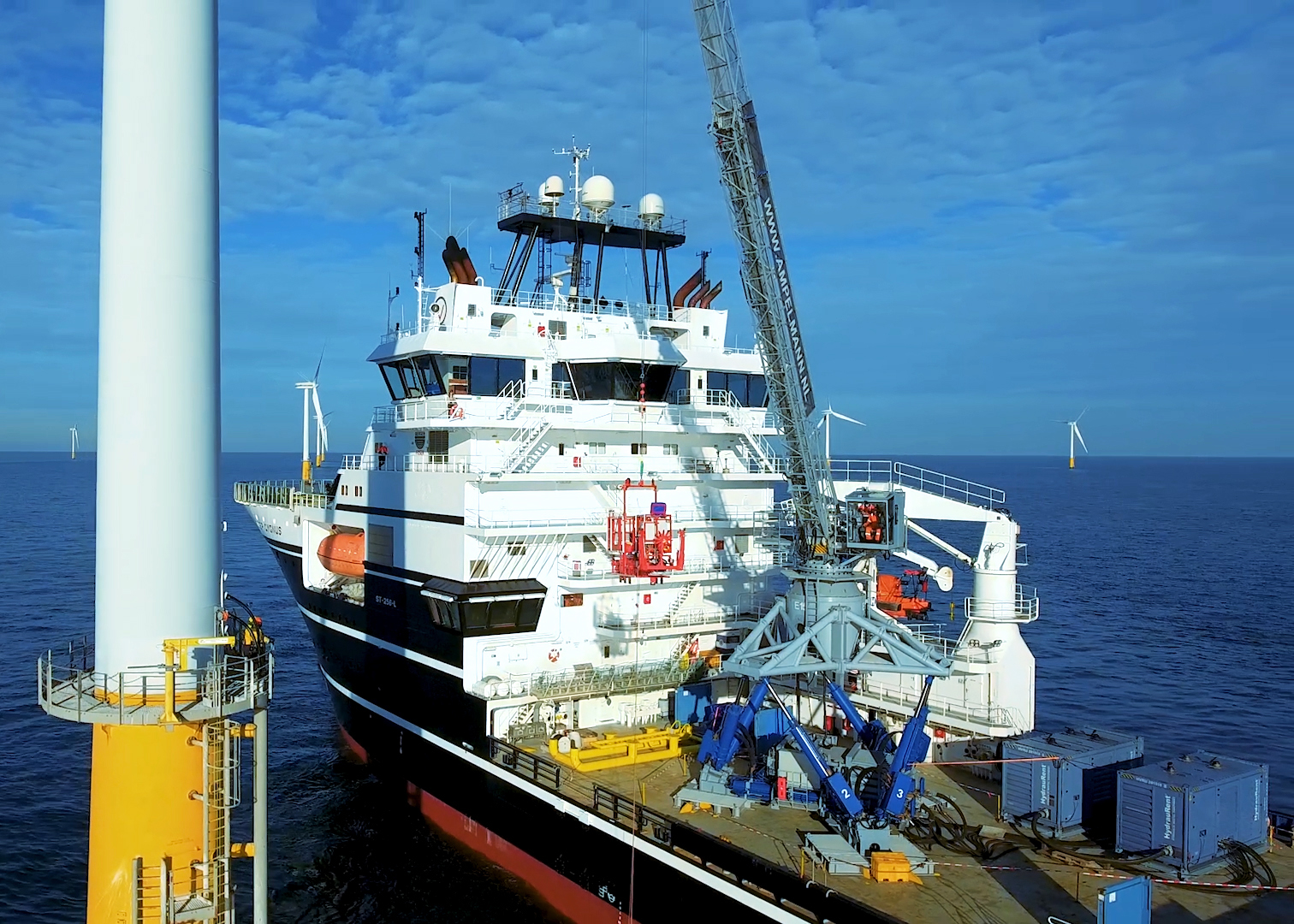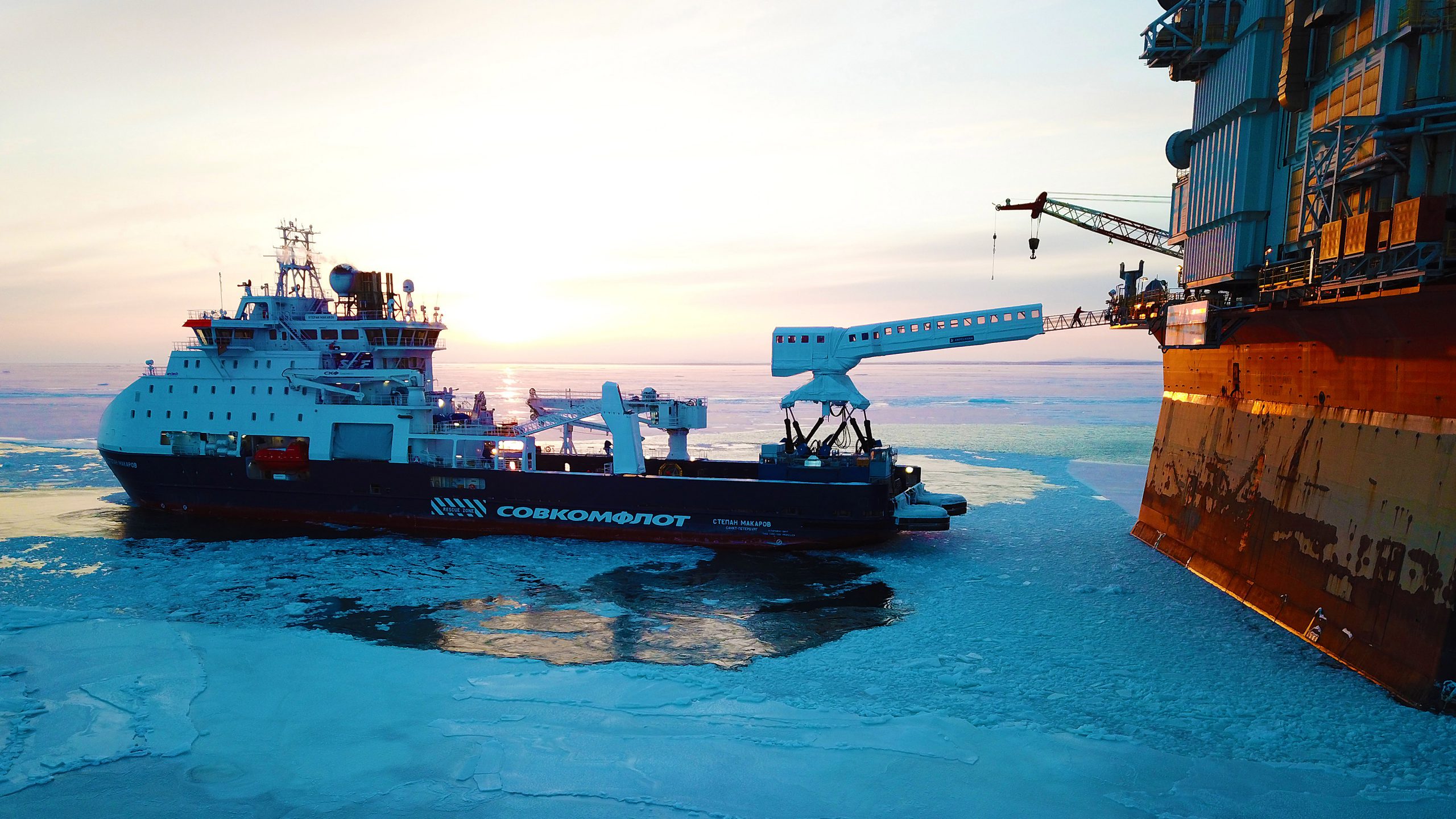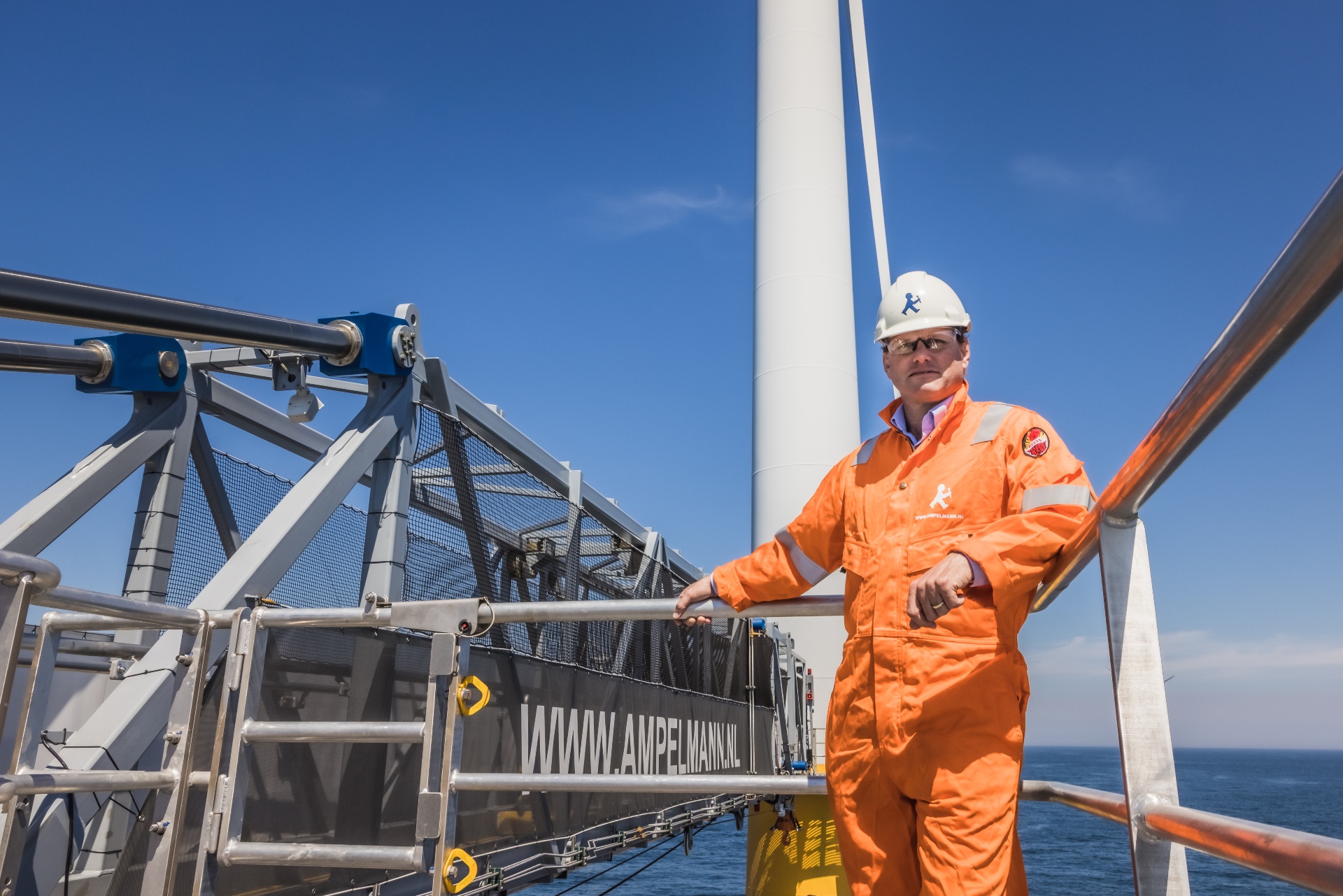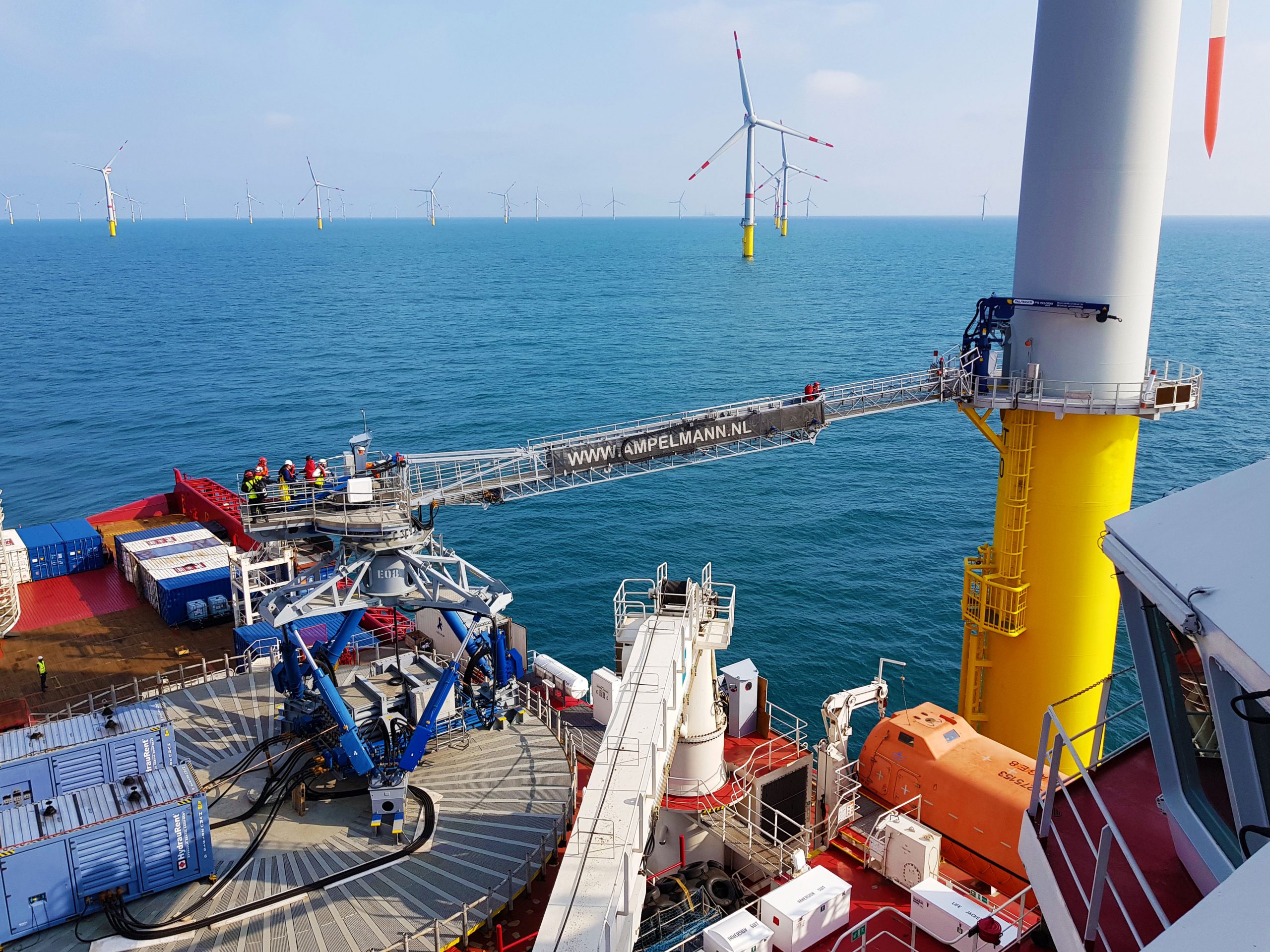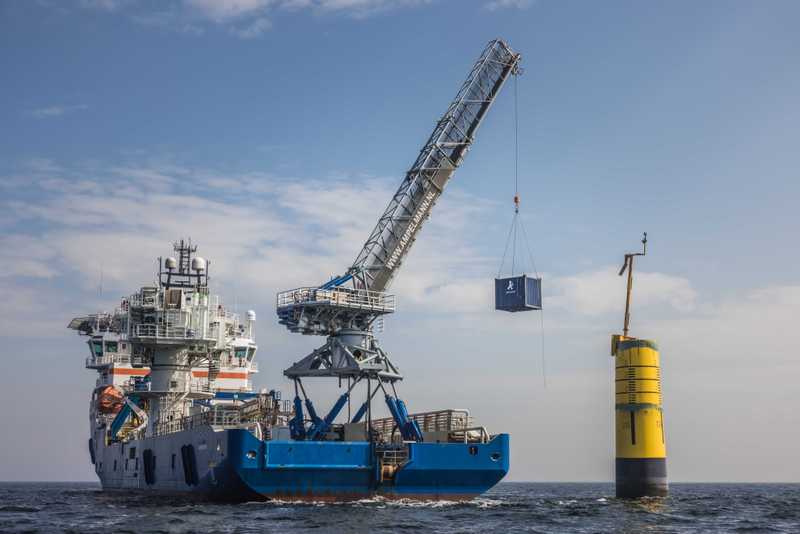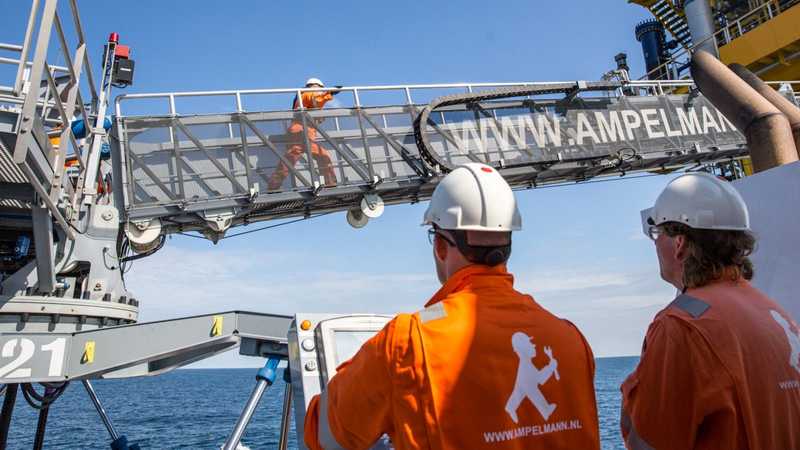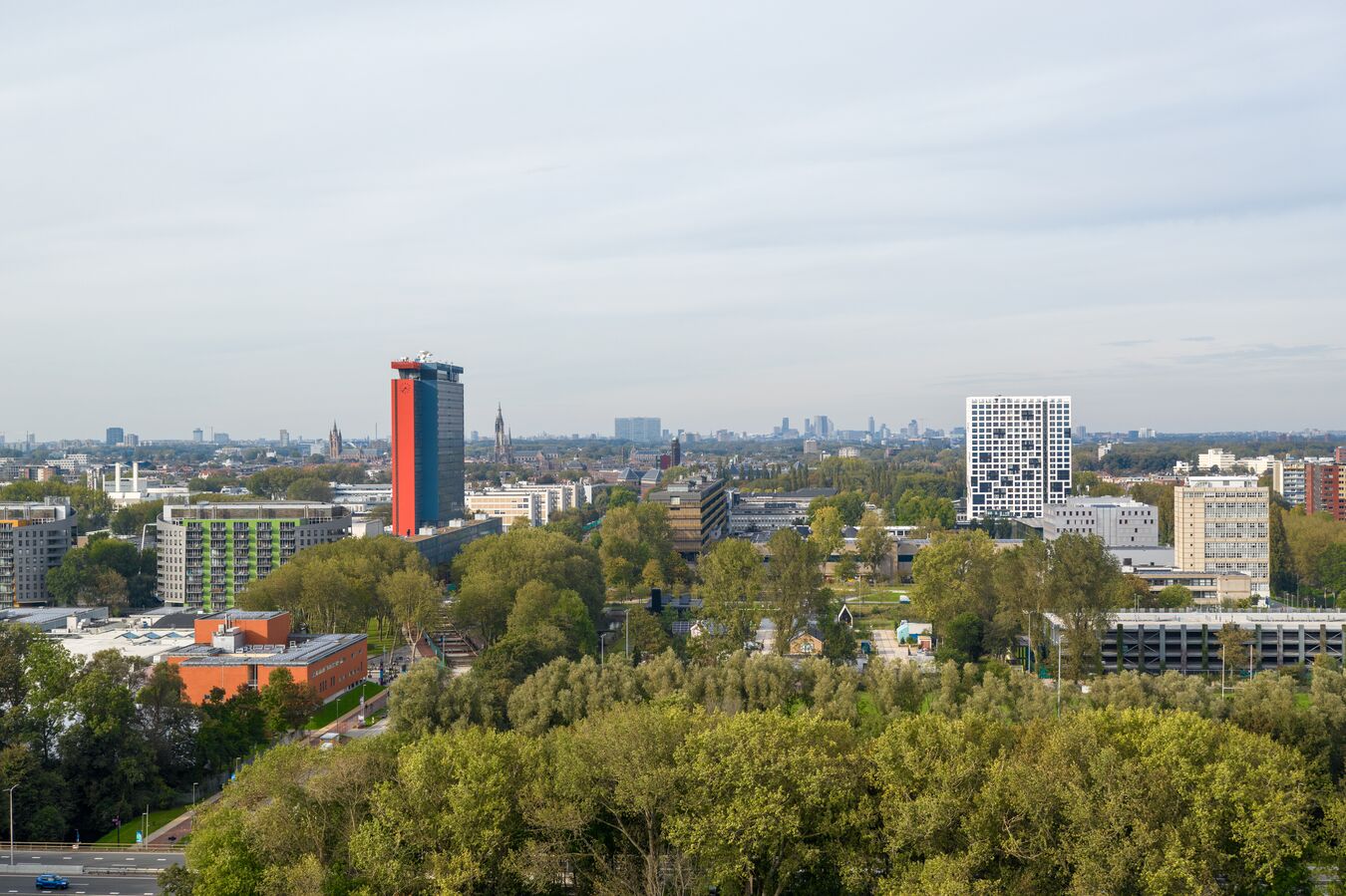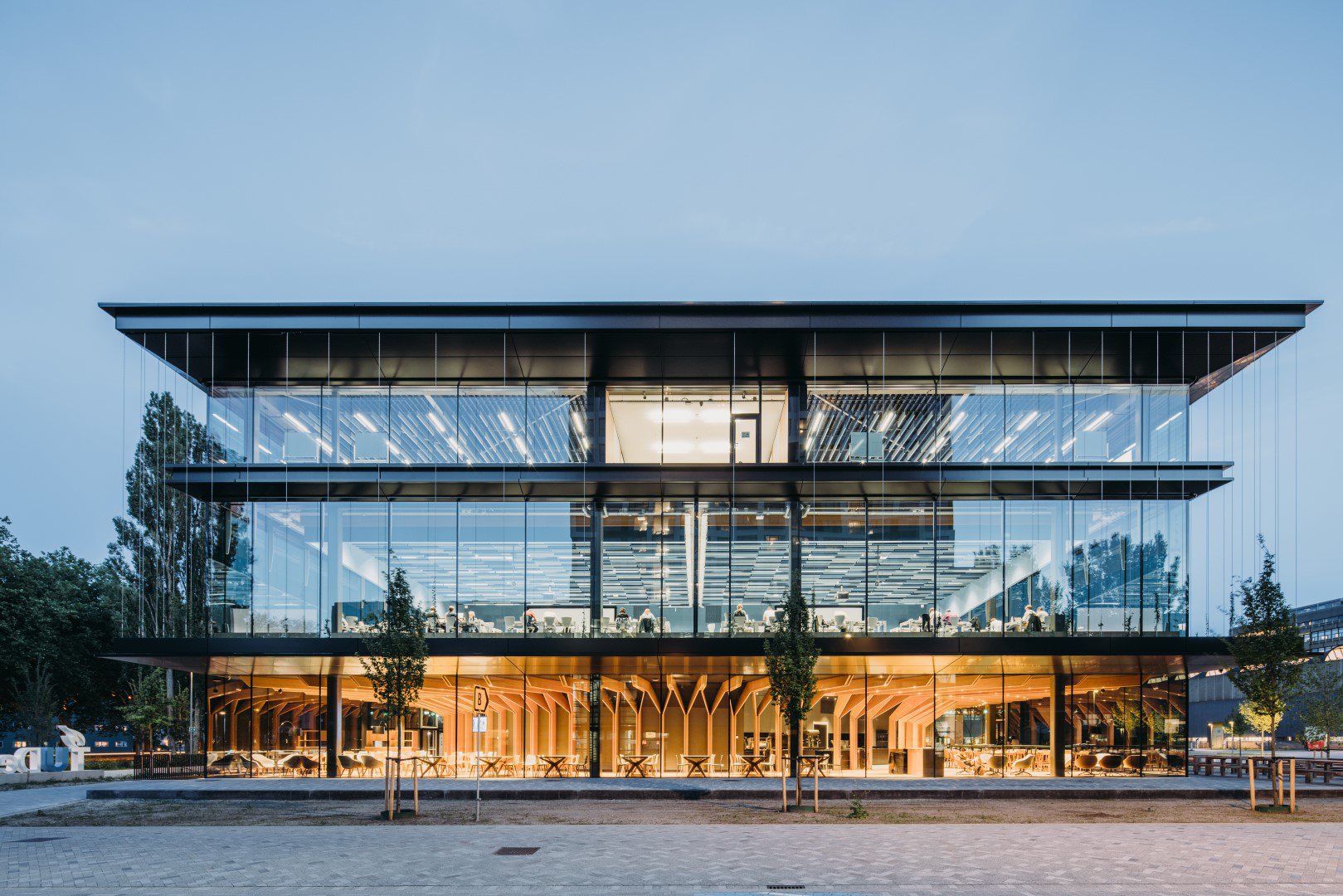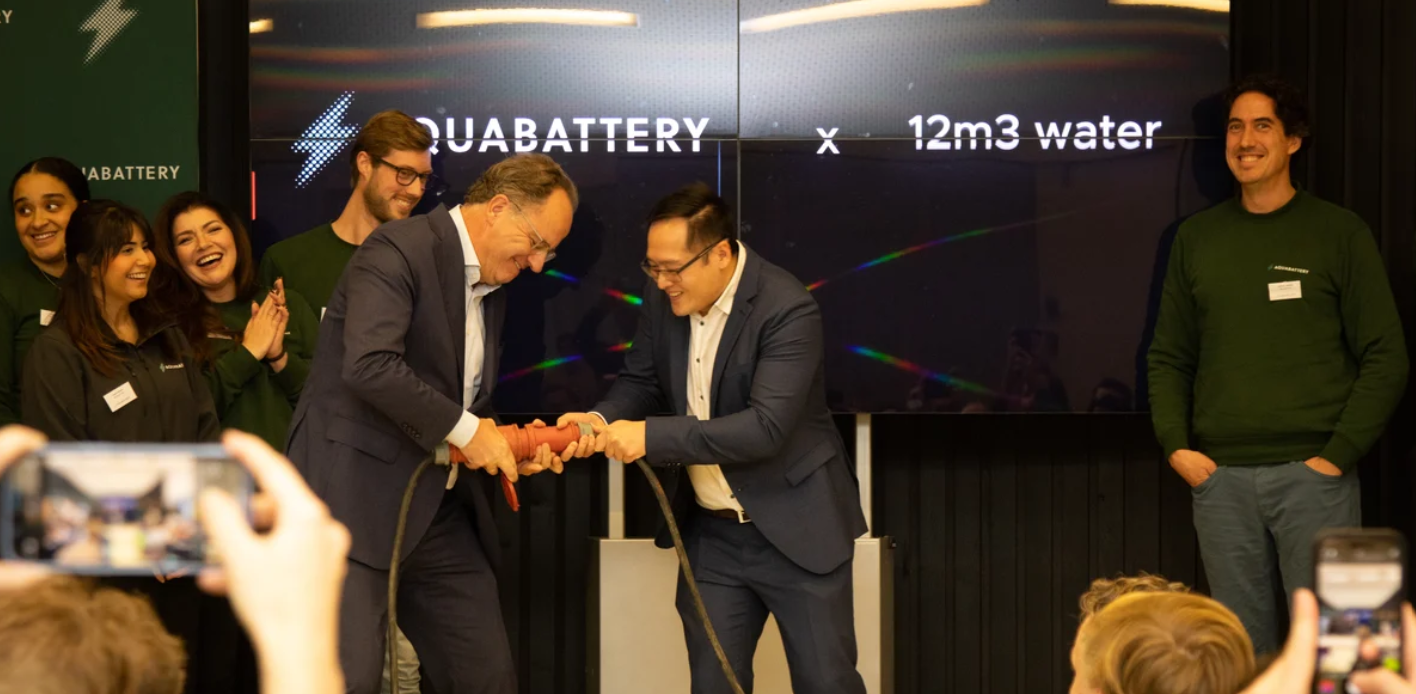A gangway attached to an upside-down flight simulator with arms up to three meters in length that compensate the rocking motion of a ship. A solution so revolutionary and cost-saving in the safe offshore transfer of both cargo and personnel that it continued to be in high demand even in times of negative oil prices. ‘From an efficiency perspective there still is a lot to gain at sea,’ says Ampelmann CEO Jan van der Tempel.
Making beautiful things outdoors, preferably at sea. That has always been Van der Tempel’s ambition, but he is at peace with the fact that he ended up spending quite a lot of time behind a desk. At least he has a view of the Delftse Schie from the Ampelmann headquarters at the Rotterdamseweg, diagonally opposite to the Faculty of Aerospace Engineering. This building houses all staff functions, engineering, and operations support. The production hall at RDM, at less than 20 kilometres distance, is where they build their offshore access systems that make passages between ships and platforms as safe as crossing the road. Installed on a ship, they lease the entire system to their customers.
For all weather conditions
The company, founded in 2007 as a TU Delft spin-off, now owns a fleet of 65 systems for all weather conditions. ‘The distinguishing feature is not so much the height of the waves as it is the movement of the ship,’ Van der Tempel says. ‘Additionally, at Sakhalin, we have our Icemann, a system that can operate at temperatures of up to forty degrees below zero.’
At the press of a button, the gangway for personnel transforms into a lifting beam for transferring cargo. ‘That saves a lot of time, and thereby money and efficiency.’
“Delft engineers are incredibly good at solving issues”
Jan van der Tempel
CEO
The Ampelmann systems were originally designed for the offshore wind market, as Van der Tempel holds a doctorate in that topic. But it doesn’t matter if a vessel is located next to a wind park or an oil and gas platform. ‘In the North Sea, it has always been fifty-fifty,’ Van der Tempel says. ‘Globally, oil and gas are the bigger market for us, but we see a clear rise in offshore wind.’
Pioneering at a larger scale
After three years of development, Ampelmann now also offers a fully electric version of its largest system – which is 80% more energy efficient compared to its hydraulic predecessor. ‘It has been a true pioneering feat,’ Van der Tempel says. ‘Ocean waves last for about seven seconds. Within that time span, we have to pump a lot of energy into the platform, and out again. The current generation of engineers is thrilled to be involved in the energy transition and to build these types of energy-efficient machines.’
With more than 350 employees, the company has long since moved from the start-up to the scale-up phase. Over the past few years, it therefore experienced a technological transformation towards standardisation. They now offer customer-specific solutions using standard building blocks, of both software and hardware. Van der Tempel: ‘Engineers always like to concoct something special. Our standardized toolbox still offers them plenty of opportunities to do just that.’
Close to outstanding engineers
‘Our products are high-tech, and they hurt if you bump into them,’ van der Tempel explains. ‘It is not software, but hardware. It means that you must be in close vicinity to the creative minds you need.’ On average, the company hosts about 50 students, for internships and thesis projects. And there are close collaborations with the TU Delft in both offshore engineering and systems and control. ‘We cherish the very positive, active interactions we have with the university.’
During his studies at TU Delft, entrepreneurship was a bit of a dirty word. For current students, however, it is a career choice that is actively encouraged by the university. ‘What hasn’t changed is the high quality of the Delft engineers,’ van der Tempel says. ‘They have an opinion, and they are willing to put their point of view up for discussion. That’s what we need. You can spend all your time making computer models, but as soon as you take to the sea with a piece of steel, things never go as expected. Delft engineers are incredibly good at solving issues.’
Boosting innovation
The ecosystem in and around Delft is of great value to Ampelmann. ‘We have the Delft University of Technology, the Rotterdam Harbour and, within a 30-kilometre radius, all the large companies that play a role in offshore energy technologies,’ van der Tempel says. ‘It’s an invaluable resource in light of the ongoing energy transition. We know each other well and are willing to try our hand at, and invest in, exciting new developments.’
In its start-up phase, Ampelmann benefitted from large companies such as Shell and Smit for testing their technology and to develop it to commercial viability. They now support others in similar fashion. Van der Tempel: ‘When we see a promising technology, we will discuss with the start-up how we can take a next step together. Good for the start-up, and good for us.’
Photos provided in this article by Ampelmann, Casper van der Kloet and Jorrit van de Eerenbeemt

